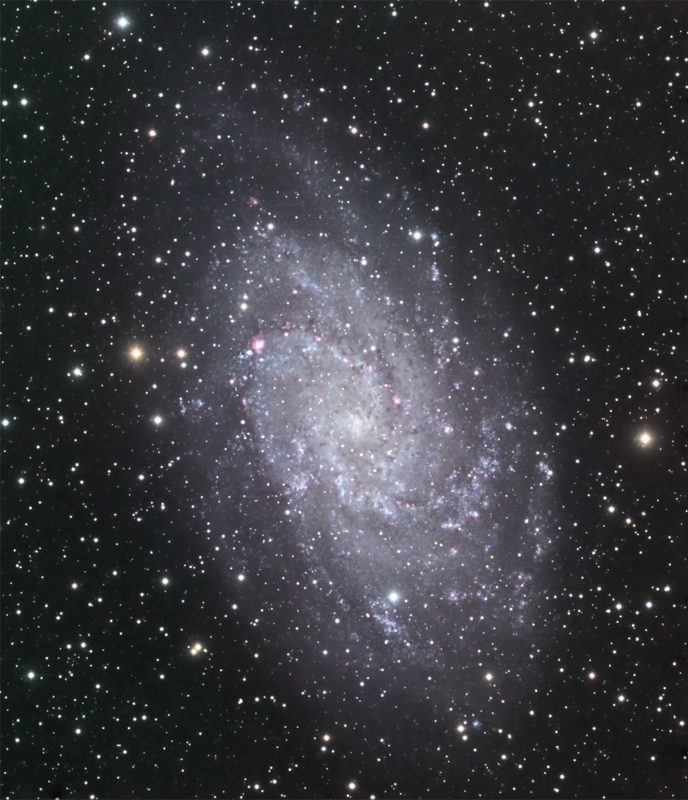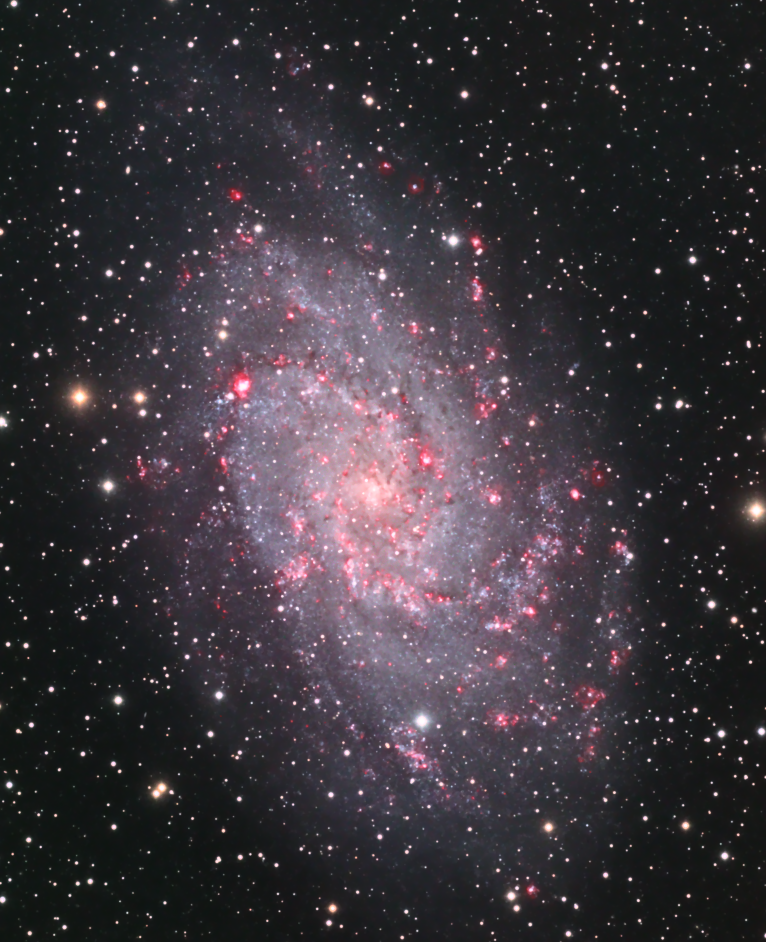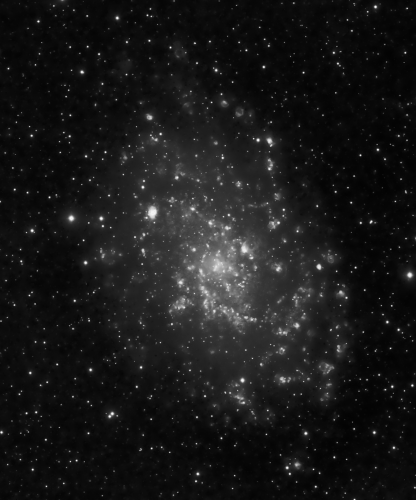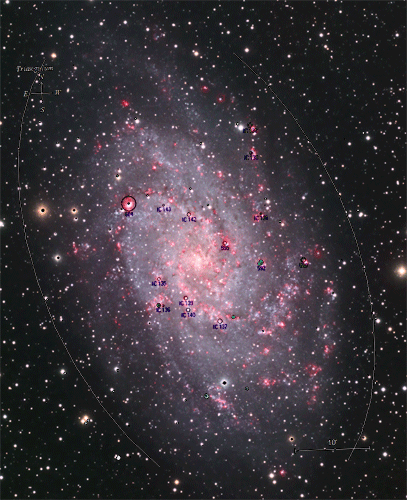
LRGB Image
The image uses the Luminance filter
to describe the brightness of the image. The Red, Green,
and Blue filters are combined to form a RGB image.
While this image looks like the final, it is of lower
quality. After processing the RGB image is used as the
Chrominance (color) to supply color to the Luminance
Image. This results in the image above.
LRGB Image enhanced with H Alpha
In this image the Red channel is
enhanced by adding a portion of the H alpha signal. See
below for more details.



